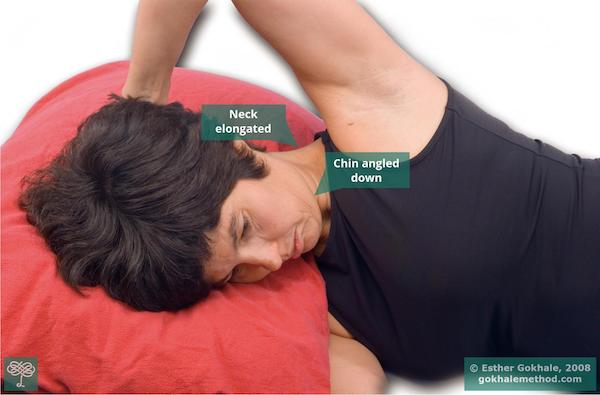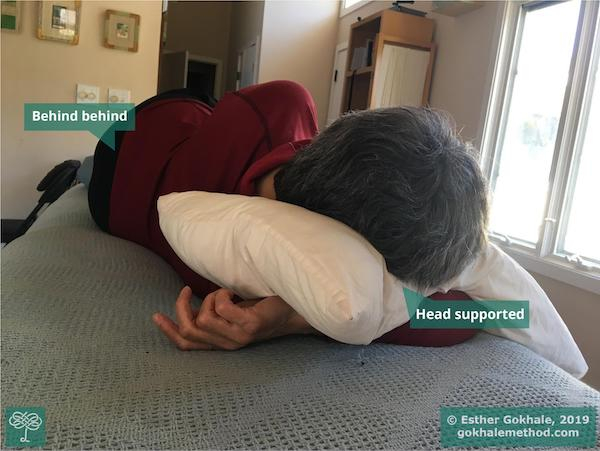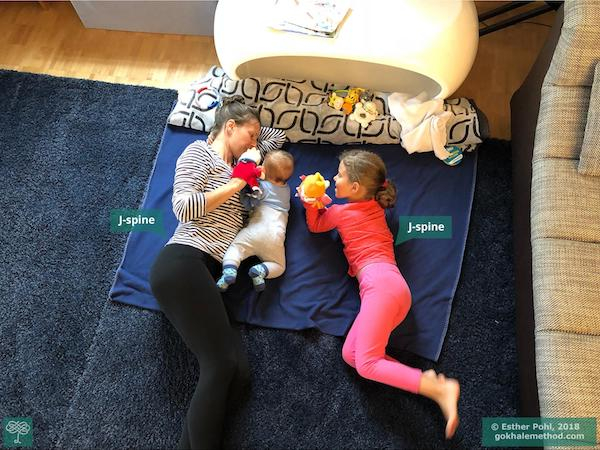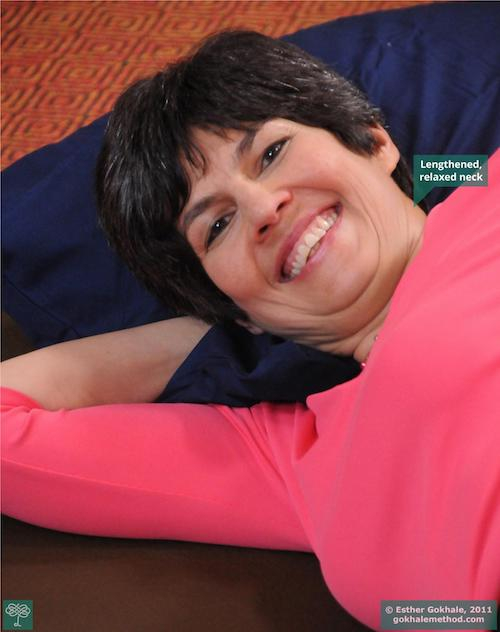Improving Your Neck Placement: a New Technique
I’ve taught stretchlying on the side for decades. So it’s a (welcome) surprise to discover a way of arranging the neck that is both more effective in adding additional neck length and more relaxing for the neck muscles.

It takes good form to be able to get rest on a surface this hard.

In July, reindeer herders in Samiland corral their reindeer to mark the ears of the unbranded calves. This involves stretches of waiting, some of it done reclining on the side, as above.
To date, I’ve taught students to grasp a clump of hair at the base of the skull and pull backward and upward so as to elongate the neck and slide the head back along the pillow into a healthier configuration.

Grasping the hair to guide the back of the head up and back.

My head is supported by a pillow and my forearm acting as a second pillow.
A new technique for lengthening the neck in stretchlying on the side
When I sleep on my side, I usually sleep on just one pillow and place my forearm under the pillow to add a second layer of thickness. Recently I discovered that I could use that forearm to manipulate my head position and enhance the stretch of the back of my neck. By slightly extending my forearm, I was able to elongate my neck further. Using my arm beneath the pillow, I was easily able to manipulate the pillow to move my head where I wanted it to go — rotated forward and glided back. This without tensing a single muscle in my neck and getting a better result — more fine-tuned and with a stronger stretch if that’s what I want (I do). The head’s journey back was very smooth — the pillow provides a soft, cushioned interface, and almost creates the illusion someone is doing the maneuver to you.

A supportive family supported by J-spines!

Forearm and pillow supporting an elongated neck. Enjoying a happy moment on the day of the public television program shoot.
Have you discovered extra techniques that improve your neck’s posture journey? Please do share your discoveries so everyone can benefit!

Comments
Thanks Esther, as always.
Thanks Esther, as always. Can you provide some guidance on how much neck extension one should aim for? That is, what technique do you use to know how far to go? Just before or after the point of discomfort? Well before the point of discomfort? This question holds for any of the stretches that you recommend.
Tony
My general view about pain
My general view about pain and discomfort is that Nature took a zillion years to design this system to tell you to stop / back off / do things differently, so I always advise people to pay attention to those messages. Stop at place that feels good, not bad.
Tiny note: in medicalese, "extension" for the neck means lifting your chin up; here we're dong the opposite. Of course, you were using the term in a correct colloquial way to mean "lengthen."
I was taught that the
I was taught that the expresion for the movement of the neck to bring the head forward or back is translation. Because people commonly develop a habitual anterior translation bringing the hed ito posterior translation makes ti apear longer and takes pressure off of the atlas /sull joint and cranial nerves.
How do you prevent your lower
How do you prevent your lower arm from falling asleep (from the pressure/weight on it) in this position?
malman below gives one good
malman below gives one good measure - use an extra head pillow. It's also helpful; to shift the lower shoulder forward a little so it's not pinned under the body.
Add New Comment
Login to add commment
Login